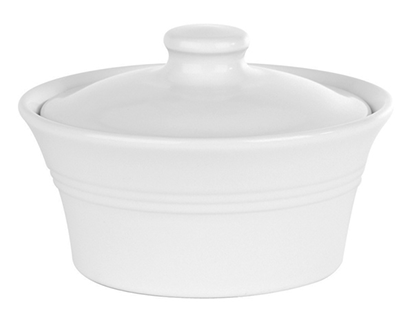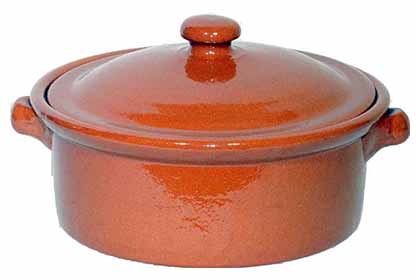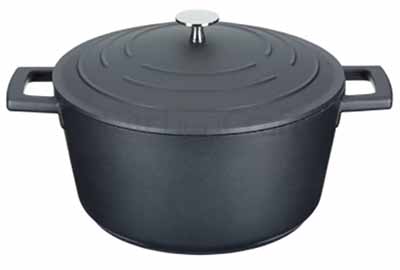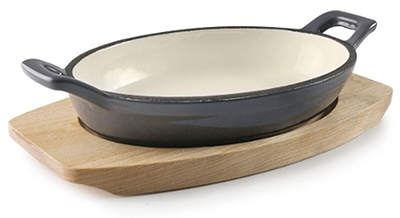The Ultimate Guide to Casseroles: Recipes, Techniques, and Traditions

Casseroles evoke comfort, tradition, and the heartwarming aroma that fills kitchens from upscale restaurants to cosy homes. They offer a blend of flavours, cultures, and comfort rolled into one. While the word 'casserole' may remind you of Sunday family dinners, these versatile creations are also taking the culinary world by storm, from high-end restaurants to the bustling kitchens of hotels. This blog post serves as an ultimate guide for everyone, including restaurant owners, hospitality providers, and home cooks alike, to show you the full potential of casseroles by exploring tantalising recipes, the perfect casserole dishes, and the rich history and culture that makes casseroles so special.
Casserole Origins
Tracing its lineage back to different corners of the globe, the casserole is a dish without borders. The French cassoulet, the British hotpot, the Greek moussaka. Each culture has its own variation. Born out of the necessity for a hearty, one-pot meal that could feed many, casseroles have evolved into a gourmet experience, pairing well with any type of setting.
The Universal Comfort Food
The power of casseroles to comfort and satisfy makes them an excellent choice for varied settings. In restaurants, they can serve as a feature dish, combining fine dining with rustic charm. Hotels and B&Bs can offer casseroles as a warm, welcoming meal for guests, while home cooks can explore a range of quick and simple recipes that please even the pickiest of eaters.
The Perfect Recipes: An Array of Options
If you're eager to use your casserole dishes, these recipes are a good starting point:
Beef Hotpot
Ingredients:
- 450 grams beef chuck, cut into 2.5cm cubes
- 1 onion, chopped
- 2 carrots, chopped
- 2 celery stalks, chopped
- 2 tablespoons plain flour
- 475ml beef stock
- 125ml red wine
- 1 tablespoon Worcestershire sauce
- 1 teaspoon dried thyme
- 1/2 teaspoon salt
- 1/4 teaspoon black pepper
- 450 grams of potatoes, peeled and thinly sliced
- 125 grams of frozen peas and carrots
- 1/4 cup chopped fresh parsley
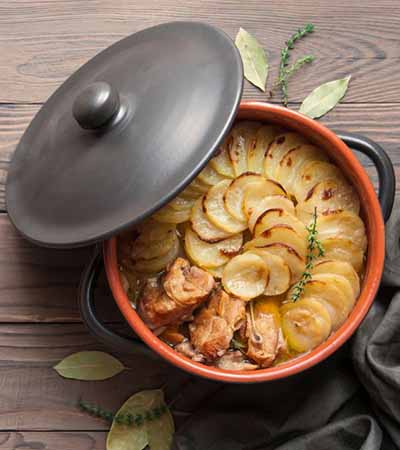
Instructions:
- Preheat oven to 175 degrees C (350 degrees F).
- In a large skillet over medium heat, brown the beef in batches. Drain off any excess grease.
- Return the beef to the skillet and add the onion, carrots, and celery. Cook until the vegetables are softened, about 5 minutes.
- Sprinkle the flour over the beef and vegetables and stir to coat.
- Gradually whisk in the beef broth, red wine, Worcestershire sauce, thyme, salt, and pepper. Bring to a boil, then reduce heat and simmer for 5 minutes, or until the sauce has thickened.
- Pour the beef mixture into a porcelain casserole dish.
- Top with the potato slices and frozen peas and carrots.
- Cover the casserole dish with a lid and bake for 1 hour.
- Remove the lid and bake for an additional 30 minutes, or until the potatoes are tender and the beef is cooked through.
- Sprinkle with parsley and serve immediately.
Safety Guidelines:
- Use a casserole dish that is the right size for your recipe. If the dish is too small, the food may not cook evenly. If the dish is too large, the food may dry out.
- Make sure that the lid of the casserole dish fits tightly. This will help to keep the moisture in the dish and prevent the food from drying out.
- Do not overfill the casserole dish. This could cause the food to boil over and create a mess.
Tips:
- If you don't want to use red wine, you can substitute beef broth or chicken broth.
- To add more vegetables to your hotpot, add some chopped mushrooms, green beans, or parsnips.
- For a vegetarian version of this recipe, substitute pearl barley for the beef and use a vegetable stock.
Shepherd’s Pie
Ingredients:
- 450 grams of ground lamb
- 1 onion, chopped
- 2 carrots, chopped
- 2 celery stalks, chopped
- 2 tablespoons all-purpose flour
- 475 milliliters beef stock
- 125 grams of frozen peas and carrots
- 1/4 cup chopped fresh parsley
- 1/4 teaspoon salt
- 1/4 teaspoon black pepper
- 1/4 teaspoon garlic powder
- 1/4 teaspoon onion powder
- 700 grams of mashed potatoes
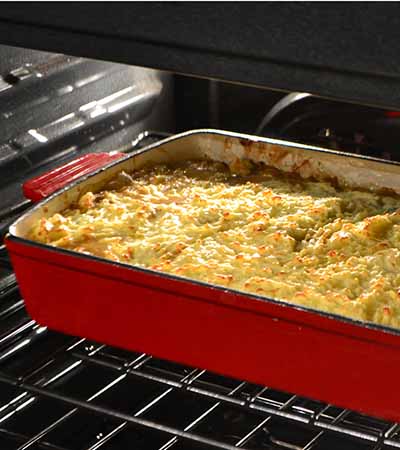
Instructions:
- Preheat oven to 190 degrees C (375 degrees F).
- Brown the ground lamb in a large skillet over medium heat. Drain off any excess grease.
- Add the onion, carrots, and celery to the skillet and cook until softened, about 5 minutes.
- Sprinkle the flour over the lamb and vegetables and stir to coat.
- Season with salt, pepper, garlic powder, and onion powder.
- Gradually whisk in the beef broth until smooth.
- Bring to a boil, then reduce heat and simmer for 5 minutes, or until the sauce has thickened.
- Stir in the peas, carrots, and parsley.
- Pour the lamb mixture into an enamel-finished casserole dish.
- Top with mashed potatoes and spread evenly.
- Bake for 20 minutes, or until the mashed potatoes are golden brown and the filling is bubbling.
- Serve immediately.
Safety Guidelines:
- Use separate cutting boards and utensils for raw meat and vegetables to prevent cross-contamination.
- Make sure the casserole dish is the right size for your recipe. If the dish is too small, the food may not cook evenly. If the dish is too large, the food may dry out.
- Do not overfill the casserole dish. This could cause the food to boil over and create a mess.
- Let the casserole dish cool slightly before serving. This will help to prevent the food from being too hot.
Tips:
- For defined layers let your lamb sauce and mashed potatoes cool before layering.
- To add more vegetables to your shepherd's pie, add some chopped mushrooms, green beans, or sweetcorn.
- For a vegetarian version of this recipe, substitute pearl barley or lentils for the ground lamb and use a vegetable stock.
The Best Types of Casserole Dishes
When it comes to choosing the right casserole dish, several factors come into play: material, size, and shape. Here are some recommendations:
Porcelain
Porcelain casserole dishes are best to use when you want to cook food evenly and slowly. They are also a good choice for dishes that need to be browned on top, such as shepherd's pie or lasagne.
This casserole dish is ideal when cooking a dish that requires a long cooking time, such as a stew or braised meat. Porcelain casserole dishes distribute heat evenly and gently, so your food will cook through without drying out.
Porcelain casserole dishes are also a good choice for people who want to cook healthy meals. They are non-reactive, so they won't leach any chemicals into your food.
Terracotta
Terracotta casserole dishes are a good choice for dishes that need to be crispy on the outside, such as paella or roasted vegetables. Terracotta casserole dishes absorb moisture from the food, which helps to create a crispy crust.
This casserole dish is perfect for cooking casseroles as terracotta helps to evenly cook the food and retain heat well. This results in a casserole that is moist and flavourful.
Terracotta casserole dishes are easy to clean, so you can spend less time in the kitchen and more time enjoying your meal.
Cast Aluminium
Cast aluminium casserole dishes are the best to use when you need a lightweight, durable, and versatile dish for cooking a variety of foods. They are particularly well-suited for dishes that need to be browned on top, such as shepherd's pie and lasagne.
Here are some specific situations where cast aluminium casserole dishes are ideal:
- When cooking a dish that is heavy or bulky, such as a lasagna or a large roast. Cast aluminium casserole dishes are lightweight and easy to handle, even when they are full of food.
- When cooking in a variety of heat sources, including the oven, stovetop, and grill. Cast aluminium casserole dishes are versatile and can be used to cook a variety of foods in different heat sources.
Enamel Finished
Enamel-finished casserole dishes are non-reactive, so they won't leach any chemicals into your food, making them a healthy choice for cooking.
Here are some specific situations where enamel-finished casserole dishes are ideal:
- When cooking a dish that needs to be browned on top. Enamel-finished casserole dishes can withstand high temperatures, so you can brown your dish in the oven without having to transfer it to another pan.
- When cooking a dish that is acidic, such as tomato sauce or wine. Enamel-finished casserole dishes are non-reactive, so they won't be affected by acidic ingredients.
- When cooking a dish that is delicate, such as a custard or a flan. Enamel-finished casserole dishes are smooth and non-porous, so they won't stick to your food.
Enamel-finished casserole dishes are also easy to clean and maintain. Simply wash them with soap and water and dry them thoroughly.
Cultural Variations
While the American South may be known for its cheesy casseroles, France brings cassoulets into the picture, and Spain presents the rich flavours of paella, often cooked in similar dishes. Embracing these diverse variations can add a global twist to your culinary offerings.
Casseroles are more than just a convenient one-pot meal; they are a culinary symbol of comfort, tradition, and adaptability. Whether you're a top-notch restaurant, a welcoming bed and breakfast, or a home cook on the hunt for the perfect dish to serve at family gatherings, Cooksmill’s quality casserole dishes are an essential part of your kitchen tools.

